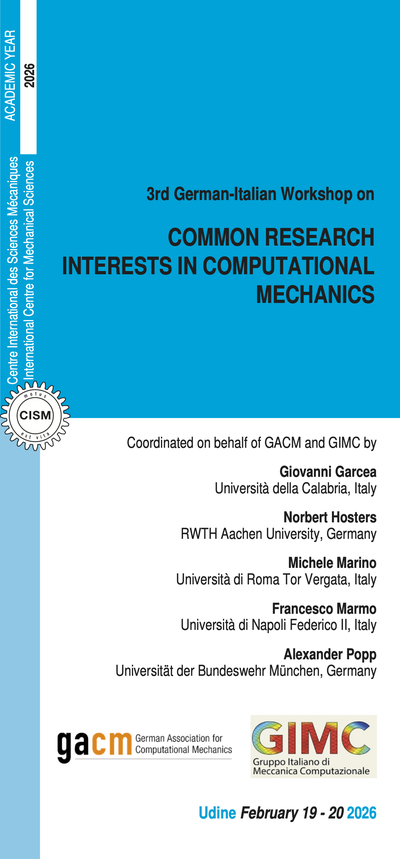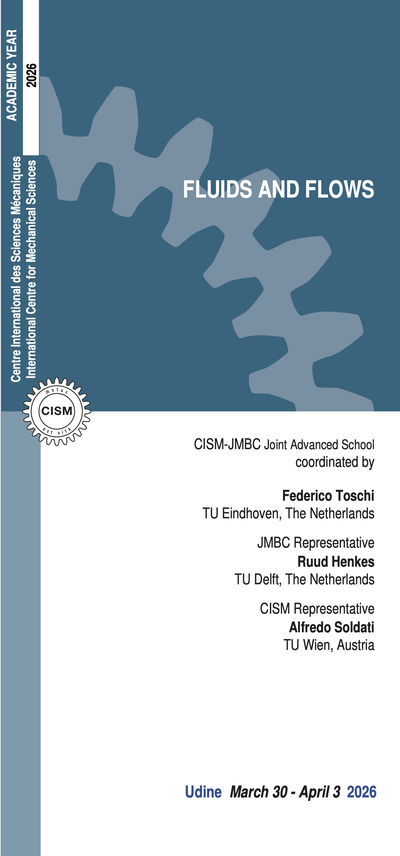Traditionally, structures have been designed to work below critical loads, while attainment of an instability was normally identified as connected to failure or, at least, to loss of functionality of the involved structural elements. Therefore, structural deformations under service loads were small, so that instability and bifurcation were viewed simply as potentially dangerous phenomena, a perspective that can be summarized in the word ‘buckliphobia’. Recently, a new research stimulus has derived from the observation that soft structures, such as for instance biological systems, but also rubber and gel, may work in a post-critical regime, where elastic elements are subject to extreme deformations, though still exhibiting excellent mechanical performances. The possibility of exploiting highly deformable structures opens new and unexpected technological possibilities. In particular, the challenge is the design of deformable and bi-stable mechanisms which can reach superior mechanical performances and can have a strong impact on several high-tech applications, including stretchable electronics, nanotube serpentines, deployable structures for aerospace engineering, cable deployment in the ocean, but also sensors and flexible actuators and vibration absorbers. The so-called ‘extreme mechanics’ is an emerging branch of instability of solids and structures aimed at the investigation of instabilities as related to pattern formation and the subsequent large deformation nonlinear behavior, a design approach that can be summarized with the sentence ‘joy of buckling’. We draw the attention on recent results on how to exploit the post-critical path of an elastic structure to obtain flexible mechanisms with special behaviours: (i.) a spherical shell shrinking towards its center, a problem related to buckling of periodic structures; (ii.) a one-degree-of-freedom elastic structure buckling in tension and compression and providing a constant force (‘neutral’) post-critical behaviour; (iii.) dynamical instabilities explaining wrapping of a liquid drop by an elastic strip; (iv.) wrinkling of thin films attached to a soft substrate. Participants will be introduced to a variety of interrelated topics involving the mechanics of extremely deformable structures, with emphasis on bifurcation, instability and nonlinear behaviour, both in the quasi-static and dynamic regimes. Essential and up-to-date theoretical, numerical, and experimental methodologies will be covered, as a tool to progress towards a satisfactory modelling of the nonlinear behaviour of structures. In this way, the course will provide a unique opportunity to learn simultaneously a broad range of subjects and techniques that are a prerequisite to research in the fields of highly deformable structures and thin films, and to the design of deformable mechanisms, adaptive and periodic structures, and stretchable electronics. Finally, it will be shown how the mechanics of highly deformable structures is the key to understanding several phenomena in biomechanics, such as morphogenesis, growth and propulsion.
D. Ambrosi, G.A. Ateshian, E.M. Arruda, M. Ben Amar, S.C. Cowin, J. Dumais, A. Goriely, G.A. Holzapfel, J. Humphrey, R. Kemkemer, E. Kuhl, J. Ma, J.E. Olberding, L.A. Taber, R. Vandiver, and K. Garikipati, 2011 Perspectives on biological growth and remodeling J. Mech. Phys. Solids 59, 863-883. A. Antkowiak, B. Audoly, C. Josserand, S. Neukirch, and M. Rivetti. Instant fabrication and selection of folded structures using drop impact. Proceedings of the National Academy of Sciences, USA, 108, 10400–10404, 2011. B. Audoly, N. Clauvelin, and S. Neukirch. Elastic knots. Physical Review Letters, 99(16): 164301, 2007. B. Audoly and Y. Pomeau, Elasticity and Geometry: From hair curls to the nonlinear response of shells, Oxford University Press, 2010. K. Bertoldi, P.M. Reis, S. Willshaw and T. Mullin, Negative Poisson’s Ratio Behavior Induced by an Elastic Instability. Advanced Materials, 22, 361, 2010. D. Bigoni, Nonlinear Solid Mechanics Bifurcation Theory and Material Instability, Cambridge University Press, 2012. A. Goriely and M. Tabor, 2011 Spontaneous rotational inversion in Phycomyces, Phys. Rev. Lett.106. K.A. Seffen and S. Pellegrino. Deployment dynamics of tape springs. Proc. Royal Society of London, A 455, 1003-1048, 1999. H.M.Y.C. Mallikarachchi and S. Pellegrino. Quasi-static folding and deployment of ultra-thin composite tape-spring hinges. Journal of Spacecraft and Rockets 48, 187-198, 2011.
Basile Audoly (None)
6 lectures on: Solutions for slender rods in extreme conditions. Extremely fast: self-similar coiling dynamics of a long circular spring; extremely soft: capillary deformation of a soft elastic rod immersed in a fluid; extremely entangled: a knot tied on an elastic rod; extremely brittle: fragmentation of beams; extremely squeezed: an elastic ring under pressure.Katia Bertoldi (None)
6 lectures on: Periodic structures, instabilities, waves propagation. How to model periodic structures and their non-linear behavior, basic examples and numerical analysis. Microscopic & macroscopic instabilities. Adaptive structural materials: exploiting instabilities to design morphable structures. Davide Bigoni (None)
6 lectures on: New instability phenomena in elastic structures. Buckling under tensile load; effects of constraint’s curvature; decreasing stiffness increases critical load; configurational forces and instability; flutter and divergence instabilities as related to Coulomb friction.Alain Goriely (None)
6 lectures on: Extremely deformable structures in bio-mechanics and growth. Anelasticity in large deformations. A general theory of morpho-elasticity. The role of anisotropy and dispersion in biological structures. Growth induced buckling in biological systems. The differential geometry of anelastic large deformations.Sébastien Neukirch (None)
6 lectures on: Bifurcations and path-following for nonlinear elastic rods and solids. Nonlinear equilibrium equations. Stability. Path-following: the shooting method, arc-length continuation, and implementation in Mathematica.Sergio Pellegrino (None)
6 lectures on: Folding and deployment of thin-shell structures. Mechanics of tape springs. Homogenized ABD matrix. Failure criteria. Quasi-static folding. Dynamic deployment and self-latching. Design optimization techniques.Applicants must apply at least one month before the beginning of the course. Application forms should be sent on-line through our web site: http://www.cism.it or by post. A message of confirmation will be sent to accepted participants. If you need assistance for registration please contact our secretariat. The 700,00 Euro registration fee includes a complimentary bag, four fixed menu buffet lunches (Friday subject to numbers), hot beverages, downloadable lecture notes and wi-fi internet access.





